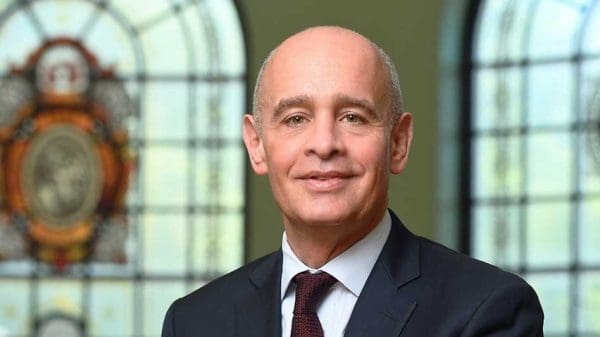Four years ago, as a new dean of the Krieger School, I welcomed the freshmen and hence, in a very real way, I am a member of the class of 2014 now and forever. It has been a pleasure to watch them mature into scholars, athletes, researchers, and community volunteers. Their presence has enriched the university and the city of Baltimore. They are ready to pursue the many paths they have chosen. As it turns out, I will be graduating with them as I take my leave from the Krieger School and head to the University of Massachusetts, Amherst, where I will become the provost and senior vice chancellor of academic affairs this summer. I join my fellow classmates in feeling a bit wistful about what we are leaving behind.
In my time as dean, some remarkable changes have taken place that will have a lasting impact on the arts and sciences. Together with my vice deans, department chairs, the countless committees we rely on, President Daniels, Provost Lieberman, and our many colleagues, we have worked on reforms that have made the Krieger School a stronger institution: more committed to our remarkable undergraduates, mindful of the financial and academic needs of our exceptional doctoral students, and with a surer compass to guide the future as a consequence of several years’ worth of planning about the fields in our constellation.
Thanks to the support of hundreds of donors, we have seen the undergraduate community become more diverse as increased financial aid helps to ensure that we live up to our credo as a true meritocracy. All the indicators of success—from SAT scores to high school GPAs to the artistic portfolios presented in the admissions season—are rising, while the presence of underrepresented minorities has grown substantially. The best and the brightest are headed to Johns Hopkins, and we are able to welcome them to a much greater degree than we could afford in the past because of the generosity of parents, alumni, and friends whose endowed scholarships make it possible.
Once here, undergraduates are finding their faculty more accessible as the proportion of teaching time devoted to their intellectual growth has increased. This bucks a national trend and bespeaks an important commitment on the part of my colleagues. At the same time, our new sabbatical program ensures that the scholars who live here will be able to devote increasing attention to their research and publications. It is their eminence that underwrites the high value of a Krieger School degree, and this investment in their visibility works to the good of everyone, student and faculty member alike.
We have been able to grow and renew the faculty, the true lifeblood of the institution, while retaining all that we value in our emeritus colleagues. The Academy at Hopkins, a new institute for advanced study for the retired faculty, now occupies the historic Greenhouse, the first building constructed on the Homewood campus. It is evolving into an entirely new concept in retirement, one built around research and continued participation in the intellectual life of the professoriate. In turn, this has enabled the Krieger School to hire new assistant professors and senior scholars. Indeed, the faculty has grown by about 16 percent in the past four years, and the newcomers bring with them all of the virtues of cross pollination that an academic community requires.
Having concluded that the arts should be more robustly represented in the Krieger School, we have expanded the Writing Seminars and the Film and Media Studies Program, and are poised now to collaborate with Peabody on the development of a major in music. By popular demand, we have created a minor in fine arts and are working on philanthropic support to create a chair in the name of our beloved John Astin to stabilize the Program in Theatre Arts and Studies. The Museums and Society Program is thriving, linking the Krieger School to some of the magnificent museums of Baltimore and Washington, D.C.
These efforts will unfold in large measure in an entirely new venue: Station North. Located about a mile south of the Homewood campus, Station North has been designated an arts neighborhood, and together with the Maryland Institute College of Art, the Maryland Film Festival, and Peabody, we are setting up shop in a unique community.
The historic Parkway Theatre will be its epicenter as it is restored to its former 1915 glory and readied to display films produced by the combined faculties and student bodies of these sister institutions. Across the street, an old art deco theater is being reconfigured to house classrooms, editing suites, and offices for the film faculty, the sound artists, and ultimately the computer programmers who will contribute their skills to the electronic gaming and sound track creation that will grow in that space. This “Silicon Valley of the Arts” will take shape over the next five years.
The opening of the Undergraduate Teaching Laboratories building, with its view of the sculpture gardens and light-filled labs, has created new energy in the life sciences. Dozens of faculty members have devoted their time and creativity to new ways to invigorate science instruction, from “active learning” classrooms in introductory physics, to the phage hunting class in biology, to the state-of-the-art simulation and modeling techniques in biophysics. I am particularly fond of the PILOT peer learning program, where undergraduates who have done exceptionally well in these difficult science courses turn their talents to nurturing their fellow undergraduates in small groups.
These are but some of the many changes that have taken place in the last four years. No doubt there will be much more to come under the leadership of my successor, whom President Daniels will be searching for in the months to come. I will look on from the distance of western Massachusetts as this outstanding school continues to move from strength to strength.
Sincerely,
Katherine Newman
James B. Knapp Dean


